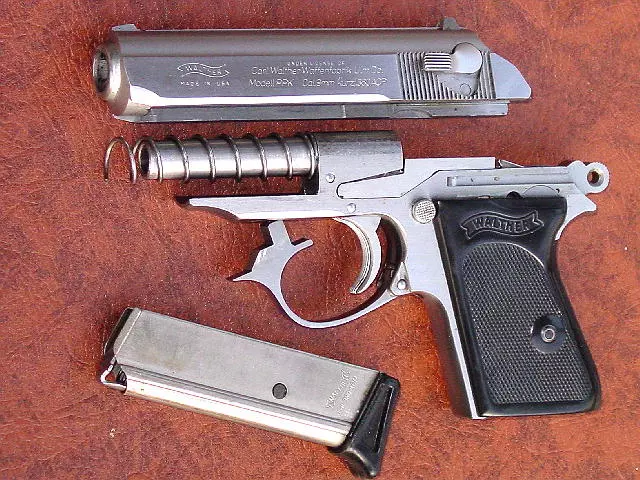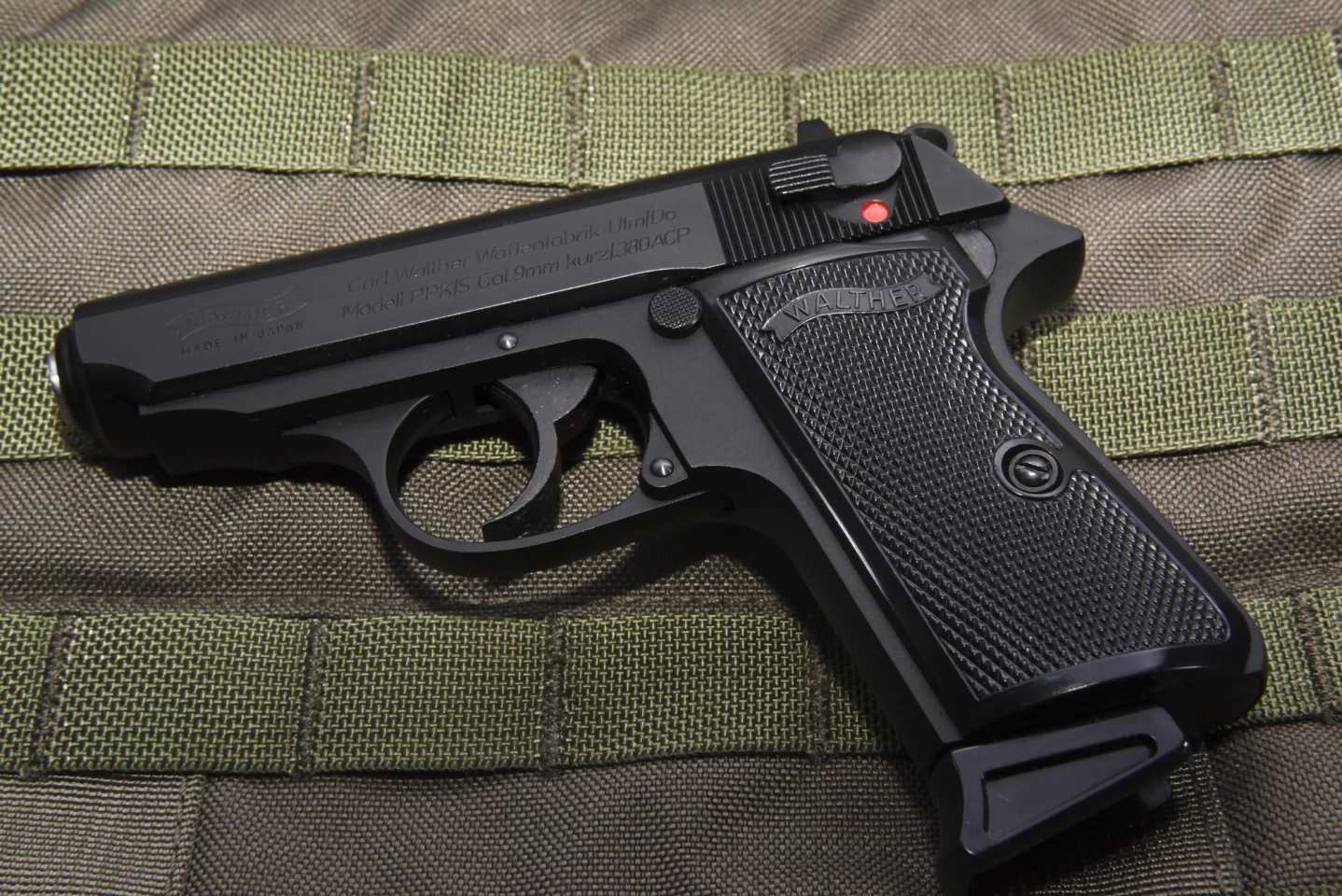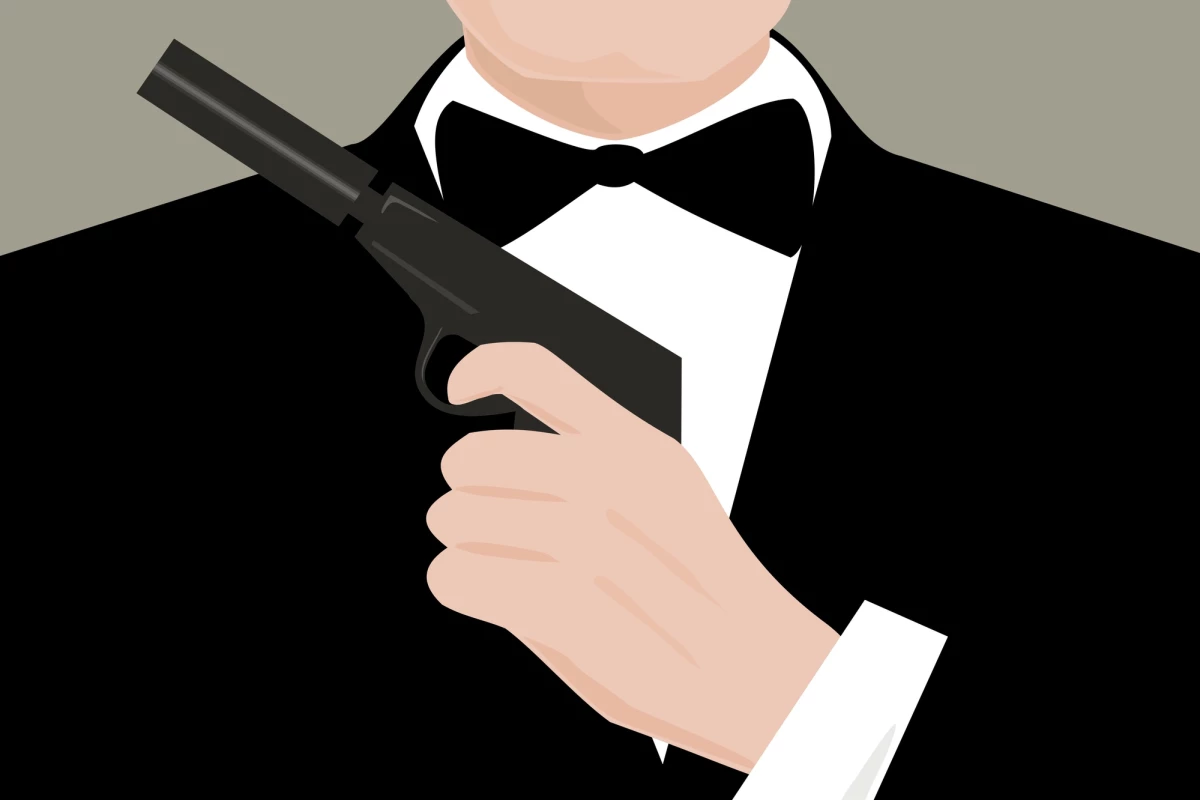In 1930, a new pistol went on sale that would revolutionize the firearms world. Best known to the public these days as the "James Bond gun", the Walther PPK was arguably the first successful handgun made for concealed carry, and its now-classic design helped to introduce a number of technical features that quickly migrated throughout the industry as it became the most copied gun in the world.
In 1958, in the pages of the newly published novel Dr. No, Ian Fleming's fictional secret agent James Bond was called into the office of the head of MI6, who warned 007 that he had to get rid of his .25 Beretta 418 pistol or quit the Double-O section. Major Geoffrey Boothroyd, better known to cinema audiences as "Q", then provides Bond with a replacement.
"Walther PPK, 7.65 millimeters, with a delivery like a brick through a plate-glass window," said Boothroyd in the film version. "The American CIA swears by them."
Ever since then, the Walther PPK has been inextricably linked to Bond, but Ian Fleming's choice wasn't a random one. In 1956, the real Geoffrey Boothroyd, a Glasgow firearms expert, wrote to Fleming, saying that, though he enjoyed the Bond novels, he didn't think the Beretta suited 007.
Boothroyd offered a number of suggestions. After a lot of discussion back and forth, Fleming decided to swap the Beretta for the Walther PPK, wrote the Beretta out of the series, and introduced the fictional version of Boothroyd in appreciation.
Since then, the PPK has continued to be carried by every actor who played Bond in the cinema, as well as any number of imitators, but this wasn't just a random choice. Before Bond was even thought of, the Walther PPK was already acknowledged as one of those rare design classics. Like a Rolex Submariner, a Porsche 911, or the first chord in A Hard Day's Night, it hits such a perfect sweet spot that there isn't much point to altering it, aside from the odd tweak here and there. No wonder that a PPK manufactured today could be mistaken for one from almost a century ago.
In addition, the PPK was a true technological game-changer. After its introduction in 1930, it quickly became the most cloned gun in the world, with imitations popping up in countries on both sides of the Iron Curtain during the Cold War.
The first PPK
The Walther PPK was derived from what was then the Carl Walther GmbH Sportwaffen's Model PP (Polizei Pistole or police pistol) handgun, which was released in 1929. Walther had been making a number of semi-automatic handguns since 1908 that had a reputation for being well-made and reliable, but the PP was a major step in a new direction. As the name implies, it was designed to be carried by police officers and it was based on a Continental attitude toward police arms. Where the Americans preferred revolvers in a relatively heavy caliber, Europeans opted for smaller, lighter handguns more suited to densely populated cities.
The Model PP was also streamlined and was one of the first handguns made from an alloy instead of steel to cut down on weight. It was immediately successful, but the police wanted a smaller version that could be carried concealed by plainclothes officers and undercover detectives.
The result was the Walther PPK (Polizei Pistole Kriminal or police pistol – detective).
Designing the PPK
The idea of a conceal carry pistol wasn't new. Small pocket pistols had been around for decades, but these tended to be either one- or two-shot items like the Derringer or tiny, very-small-caliber guns like the Colt Model 1908 Vest Pocket that Peter Lorre pulled on Humphrey Bogart in The Maltese Falcon.
The PPK was something very different. Like the PP, it was streamlined, only much more so, with every edge that could catch on clothing smoothed away. Even the front sight was milled into a tiny, graceful curve. It was also small, weighing only 21 oz (590 g) with a 3.3-in (83-mm) barrel, giving it an overall length of 6.1 in (155 mm) and a height of 3.9 in (100 mm), though a pinky rest on the magazine adds a bit more height. Other weight and size reductions came by using a wrap-around plastic grip instead of one with a steel back strap.
This was combined with a magazine of seven standard 7.65 mm cartridges that were a compromise between size and stopping power that made the PPK a lightweight by some standards, but deadly at close quarters. It also came in a number of variants that chambered the 9 mm kurz (.380 ACP), the .22 LR, and 6.35 mm cartridges.

Being compact with reasonable stopping power, the PPK was an instant hit with European police forces. But why? What made the Walther PPK so successful that it's still made 90 years after its birth?
The answer lies in its design, much of which was carried over from the PP, that combines a very sophisticated mechanism with very simple execution. Semi-automatic pistols work by means of the upper part of the handgun acting as a slide, which is forced backward by the recoil as the gun fires. This powers the mechanism that ejects the spent round and loads the next one from the magazine into the firing chamber.
Without going on a long technical detour, most semi-automatic pistols use a tilt-barrel system, where the barrel can move and tilt up as the slide pushes back. This helps to solve some of the problems of a handgun with a short barrel, but it's also a complex mechanism with a number of moving parts. The PPK is what is called a straight blowback design, where the barrel is fixed to the gun's frame and acts as a guide rod for the recoil spring. This not only makes the mechanism simpler, it also makes the PPK more accurate than comparable tilt-barrel models. Unfortunately, it also gives the PPK a good kick when it's fired because the mechanism doesn't absorb much of the recoil.
Safety
Since the PPK was designed for concealed carry in situations where a holster might be abandoned in favor of a pocket or waistband, the Walther PPK design places a high premium on safety. Its streamlined design helped stop anything from catching on clothing and the mechanism had a number of features to prevent it from going off by accident, even with a cartridge in the firing chamber.
Most people have heard that handguns often have safety catches, but on the PPK the safety does a lot more than lock the mechanism so the trigger can't be pulled. Instead, activating the safety locks the firing pin so it can't move toward the cartridge. Then it rotates a steel block behind the firing pin so the hammer can't hit it, and, if the hammer is cocked, the safety decocks it, pushes the trigger forward, and locks it.
Another safety feature is the signal pin, which is a little metal pin that protrudes from the rear of the gun slide when the chamber is loaded. There's even a slot in the hammer that makes the pin visible even when the gun is being aimed.
Single action/double action
But what really made the PPK stand out when it was introduced was that, along with the PP, it was the first successful single-action/double-action handgun to reach the market. This means the PPK combines the two basic ways a handgun operates into one firearm.
Put simply, in a single action, the gun needs to be cocked before each round is fired. Pulling the trigger only releases the hammer. In a double-action handgun, pulling the trigger pulls back the hammer and lets it fall, firing the gun. Each time the trigger is pulled, the hammer is again pulled back.

In a single-action/double-action like the PPK, the mechanism does both. Pulling the trigger pulls back the hammer and fires the gun, like in double-action. The recoil reloads the gun and pulls back and locks the hammer. Each subsequent pull releases the hammer, like in a single-action, repeating the cycle. This made the PPK much faster and easier to bring into action when needed in a hurry. In addition, by combining the two actions, the PPK added another safety factor by making the first pull on the trigger hard, reducing the chances of the gun going off by accident, and the following pulls light, improving accuracy.
The legend
However, there's more to the Walther PPK than good engineering and spy films. Like all classic designs, there's a legend that goes with the technology that is often as big a selling point as any designer label.
For one thing, the Walther PPK rose to fame at the same time as the Nazi party came to power in Germany. In addition to being used by police and intelligence services in Germany and abroad, the PPK became very popular with the Nazis, becoming a popular presentation piece, with many, often with elaborate decorations, awarded to high-ranking officials. In addition, party members could buy PPKs at a substantial discount. The result is that many desk drawers in the Reich had a red box lurking in the back containing a PPK that had never been fired.
During the Second World War, the PPK saw service with the Wehrmacht and the Waffen SS and, capping of its Nazi-related notoriety, when Berlin fell in 1945 Adolph Hitler committed suicide in the Führerbunker using his personal PPK.

After the war, the PPK was adopted by many intelligence agencies, including Britain's MI5 and MI6, Germany's BND, France's SDECE, Israel's Mossad and the Swiss Intelligence and Security Service. Even the Communist Chinese Intel service and East Germany's Stasi used PPK clones. It also served as the template for the Soviet Makarov, Hungarian FEG PA-63, Polish P-64, American Accu-Tek AT-380 II, and the Argentinian Bersa Thunder 380.
However, the Walther company itself fell on hard times as the Allies forbade Germany from arms manufacturing and the original factory fell inside the Soviet occupation zone. Using some rescued design papers as collateral, the company set itself up again in Ulm and survived by licensing manufacturing rights for the PPK to a French company, Manufacture de Machines du Haut-Rhin (Manurhin), until Walther could restart manufacturing in Germany in 1957.
Despite this setback, the PPK remained fantastically popular with the public, especially in America. Many returning American GIs smuggled PPKs they had acquired in one way or another. In fact, so many reached the States that a cottage industry sprang up around marketing these "liberated" PPKs, which lasted into the 1960s.
Many PPKs had to make their way into the US by way of bulging diplomatic bags, because in 1968 the American government passed a law banning the import of small handguns into the country unless they met certain conditions. This ban kept the PPK out of US shops until Walther came up with the PPK/S variant to beat the ban. Walther paired the frame of the PP with the slide and barrel of the PPK to make it 1.8 oz (51 g) heavier and 0.2 in (5.1 mm) higher. Walther then slapped an S for Sport on the model designation, and beat the restrictions to the company's largest market.
In 1983, Walther arranged for the PPK and its PPK/S variant to be manufactured in the US under license, first by Ranger Manufacturing and then by Smith and Wesson. The latter introduced slight modifications, such as a longer "beaver tail" to protect the shooter's hand when the slide shot back, and a modified loading ramp to keep the gun from jamming when new hollow point ammunition was introduced.
The PPK today
Today, the PPK and PPK/S are manufactured in Germany and Arkansas, so some are shipped to the US from Germany, and almost a century after its introduction against a world of advanced handguns made of polymer and sporting all sorts of technical advances, it stands up surprisingly well. There are handguns that are smaller, some that are much more powerful, and there are some that feel like toys in weight compared to the stainless steel in a Walther PPK, but it's still a very compact weapon with lines that are impressive from an aesthetic as well as an engineering aspect.
The PPK retains a reputation of being a good, if unremarkable, pistol. In a way, that's actually praise because all the things that make it unremarkable today were what made it remarkable in 1930. It's a firearm that took many innovations and propelled them into the mainstream. In a sense, if we are comparing the PPK to modern handguns, we're often comparing it to itself.
Besides, when you have a gun that was owned by not only James Bond, but Elvis Presley, you're up against a serious reputation.







